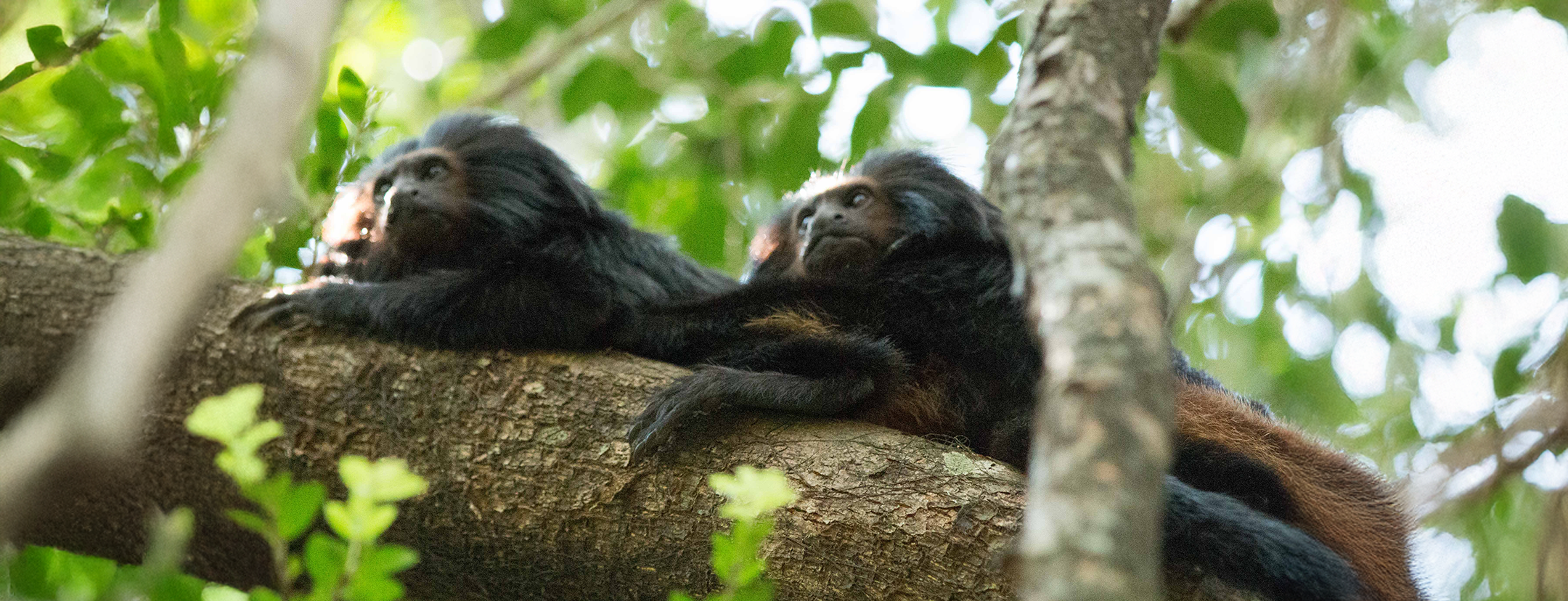Why the Black Lion Tamarin Matters
Black lion tamarins disperse seeds, prune insect outbreaks, and inspire curiosity to those who spot their black-and-gold flash. Protecting their last strongholds shields dozens of other forest dwellers—capuchins, howler monkeys, orchids, and endemic birds—while stitching carbon-rich habitat back into Brazil’s climate arsenal. Each reconnected fragment is a lifeline for wildlife and for communities that rely on healthy water, soil, and biodiversity.

Progress So Far
For over 40 years, IPÊ has led the charge for black lion tamarin conservation. The program has discovered 10 new populations, reintroduced tamarins to key areas, and restored Brazil’s largest forest corridor—over 12,000 acres—benefiting both wildlife and local communities. These efforts led to the creation of the 6,700-hectare Black Lion Tamarin Ecological Station and earned the species its status as a symbol of São Paulo’s Atlantic Forest. Thanks to IPÊ’s work, the tamarin’s status improved from Critically Endangered to Endangered in 2008, a rare success for a primate species.
How the Species Reintroduction Fund is Helping
The Colossal Foundation’s grant powers a four-pronged push for black lion tamarin in 2025:
-
Recovery Assessment – Confirm presence, genetics, and health of tamarins across three priority landscapes
-
Translocation Planning – Updating the translocation and rewilding plan for key forest fragments.
-
Habitat Restoration – Prioritizing 2,000 acres for restoration and protection to enhance habitat connectivity.
-
Community Outreach – Roll out hands-on lessons to 100 teachers, reaching 1,000+ students and families with stories of forest conservation.


